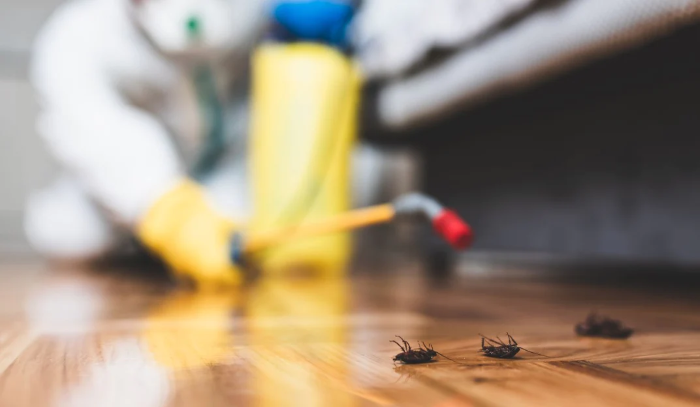Bed bugs are persistent pests that can infest your home and disrupt your sleep. Dealing with a bed bug infestation requires a multi-faceted approach, and one effective method is the installation of bed bug interceptors and traps.
In this article, we will provide you with a step-by-step guide on installing bed bug interceptors, explain the proper placement of bed bug traps for bed legs, and share some valuable tips and tricks for effective installation.
Step-by-Step Guide to Installing Bed Bug Interceptors
Step 1: Preparation
Before installing bed bug interceptors, it is crucial to prepare the area properly. Start by thoroughly cleaning the room, including vacuuming the floors, baseboards, and furniture. Remove any clutter or unnecessary items that could provide hiding places for bed bugs.
Step 2: Selecting the Interceptors
Choose high-quality bed bug interceptors that are designed to trap and monitor bed bug activity effectively. One recommended product is the Bed Bug Blocker Pro, available at EcoPest Supply. These interceptors are made of durable materials and feature a dual-well design to prevent bed bugs from escaping.
Step 3: Applying the Interceptors
Place the interceptors under each leg of your bed frame. Ensure that the legs are fully inside the wells of the interceptor. The bed bugs climbing up the bed legs will fall into the outer pitfall chamber, preventing them from reaching the bed. Repeat this process for any other furniture with legs, such as nightstands or sofas.
Step 4: Regular Inspection
Regularly inspect the interceptors for signs of bed bug activity. Check for trapped bed bugs or evidence such as shed skin, fecal stains, or blood spots. Early detection is essential for effective treatment, so be vigilant in monitoring the interceptors.
Proper Placement of Bed Bug Traps for Bed Legs
Proper placement of bed bug traps is crucial for maximizing their effectiveness. Here are some guidelines to follow:
Close to the Bed: Place the traps as close to the bed legs as possible, as bed bugs are primarily nocturnal and will most likely approach the bed from nearby areas.
Direct Contact: Ensure that the traps have direct contact with the floor to prevent bed bugs from crawling underneath. This will increase the likelihood of capturing any bed bugs attempting to climb up the bed legs.
Symmetry: Maintain symmetry by placing traps evenly under each leg of the bed. This will provide equal opportunities for bed bugs to encounter the traps, enhancing the chances of successful interception.
Tips and Tricks for Effective Installation
Encase the Mattress: Consider encasing your mattress and box spring with bed bug-proof encasements to prevent bed bug infestations further. Encasements create a barrier that prevents bed bugs from entering or escaping, making it easier to monitor and control the infestation.
Minimize Contact Points: Reduce the number of potential entry points for bed bugs by keeping your bed away from walls and other furniture. This will make it more challenging for bed bugs to access your sleeping area.
Monitor Travel Items: Bed bugs can hitch a ride on luggage and other travel items, potentially infesting your home upon your return. Inspect and treat your travel bags, clothing, and other items thoroughly before bringing them inside your home to prevent bed bug introductions.
Wash and Dry Bedding: Regularly launder your bedding, including sheets, pillowcases, blankets, and mattress covers, in hot water. The heat from the washing machine and dryer can kill any bed bugs or eggs present on the fabric.
Seal Cracks and Crevices: Inspect your room for any cracks or crevices where bed bugs can hide. Seal these openings with caulk or other appropriate sealants to prevent bed bugs from accessing your sleeping area.
Consistent Monitoring: Inspect the interceptors and traps regularly for any signs of bed bug activity. Remember that early detection is crucial for successful bed bug control, so remain vigilant even after installing the interceptors.
Professional Assistance: If the infestation persists or becomes overwhelming, it is recommended to seek professional pest control services. Pest control experts have the knowledge, experience, and tools to eliminate bed bug infestations effectively.
FAQs
Q1. Where do you put interceptors for bed bugs?
Answer- Interceptors for bed bugs should be placed under the legs of beds, couches, and other furniture. They can also be placed around the perimeter of a room, particularly near potential entry points for bed bugs, such as baseboards and cracks.
Q2. How do you install bed bug traps?
Answer- To install bed bug traps, place them in areas where bed bugs are likely to travel, such as along the baseboards, near the headboard of the bed, or underneath furniture. Ensure that the traps are properly aligned and secure to prevent bed bugs from escaping.
Q3. Do interceptors work for bed bugs?
Answer- Interceptors are effective tools for monitoring and trapping bed bugs. They can help identify the presence of bed bugs, prevent them from climbing onto beds or furniture, and provide valuable information for pest control professionals in devising appropriate treatment strategies.
Conclusion
Now that you know how to install bed bug traps for bed legs, you can take proactive measures to protect yourself and your home from these persistent pests.
Following the comprehensive guide, you can effectively monitor and control bed bug infestations, ensuring a peaceful and bug-free environment. With this valuable knowledge, you can rest easy knowing that you have the tools to tackle any potential bed bug problem.
So go ahead and take action, armed with the confidence to safeguard your sleep and maintain hygienic living space.


